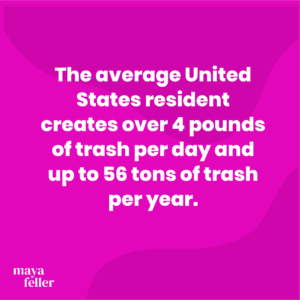Recycling Realities: What really happens to your trash
Recycling Realities: What really happens with your trash?
The 3 R’s
Reduce, reuse and recycle are principles for supporting the environment and the communities we live in. Reduce the items that we use and throw away. Reuse or upcycle items so they don’t end up in landfills or trash. Recycle, take your items and turn them into another product – such as using glass yogurt jars as drinking glasses.
- Reduce the items that we use and throw away.
- Reuse or upcycle items so they don’t end up in landfills or trash.
- Recycle, by taking your items and turning them into another product – such as using glass yogurt jars as drinking glasses.
The Environmental Protection Agency defines Recycling as the recovery of useful materials, such as paper, glass, plastic and metals – these items are saved from, becoming trash and used to make a new product. This process reduces the amount of virgin raw materials needed to make products.
As consumers we are quite familiar with these principles and understand that they are important for the health of our planet and our communities. What we don’t know so much about is what really happens when we recycle items.

Here are some key terms to help you understand what really happens to our trash.
David S. Smith, Ph.D a science driven R&D leader working across packaging, food, health and beauty and related industries to capture value and growth in the marketplace provides some clear definitions.
Recyclable vs Recycled
You may have read a product label that said recyclable and wondered what it meant. Smith notes that recyclable is generally a loose description and is typically defined based on a number of criteria. So you are right to wonder what it means. The criteria for determining if a product is in fact recyclable depends on accessibility of collection systems in a municipality, sorting ability, usability of material for further reprocessing, notes Smith. Most materials used in the US are recyclable, that does NOT mean they are recycled. That is an important distinction to note. Many items are made up of mixed materials and this adds a level of complexity to practical recyclability. Think for example, about a plastic lined paper cup or a plastic bottle with a label, alone all of the materials are recyclable however when mixed together they may need to be separated in order to be properly recycled.
Now that you know that recyclable items may not be recycled you may be feeling a bit dejected. It’s not all bad news. While recycling rates vary across the United States the majority of paper and metal items do get recycled. It’s good and there is space to do better. To put the numbers into perspective here are some current general numbers according to Smith.
METAL
Aluminum – 55%
Steel – 75%
GLASS – 30+%
PLASTIC – 30%
PAPER – 65%
In the United States there are no specific national recycling laws, it’s up to local and state governments to oversee recycling and waste management laws and practices.
What Consumers Need To Know
Smith reminds us that consumers should tell brand owners that they way more sustainable packaging. We cannot sustain the use of virgin materials that we do today. Consumers should also familiarize themselves with the recycling rules of where they live. This makes it more likely that their recyclable materials will be recycled.
The Takeaway
Reuse items at home when possible.
Get to know your area recycling laws
Recycle items that are recyclable and throw out the rest
Tell your local officials to prioritize and support recycling
References:
- https://www.epa.gov/facts-and-figures-about-materials-waste-and-recycling/national-overview-facts-and-figures-materials#Recycling/Composting
- https://www.epa.gov/recycle/frequent-questions-recycling
- https://www.earthday.org/7-tips-to-recycle-better/



Leave a Reply